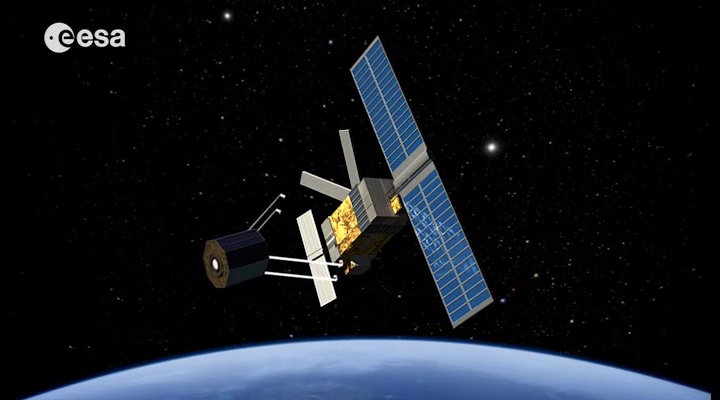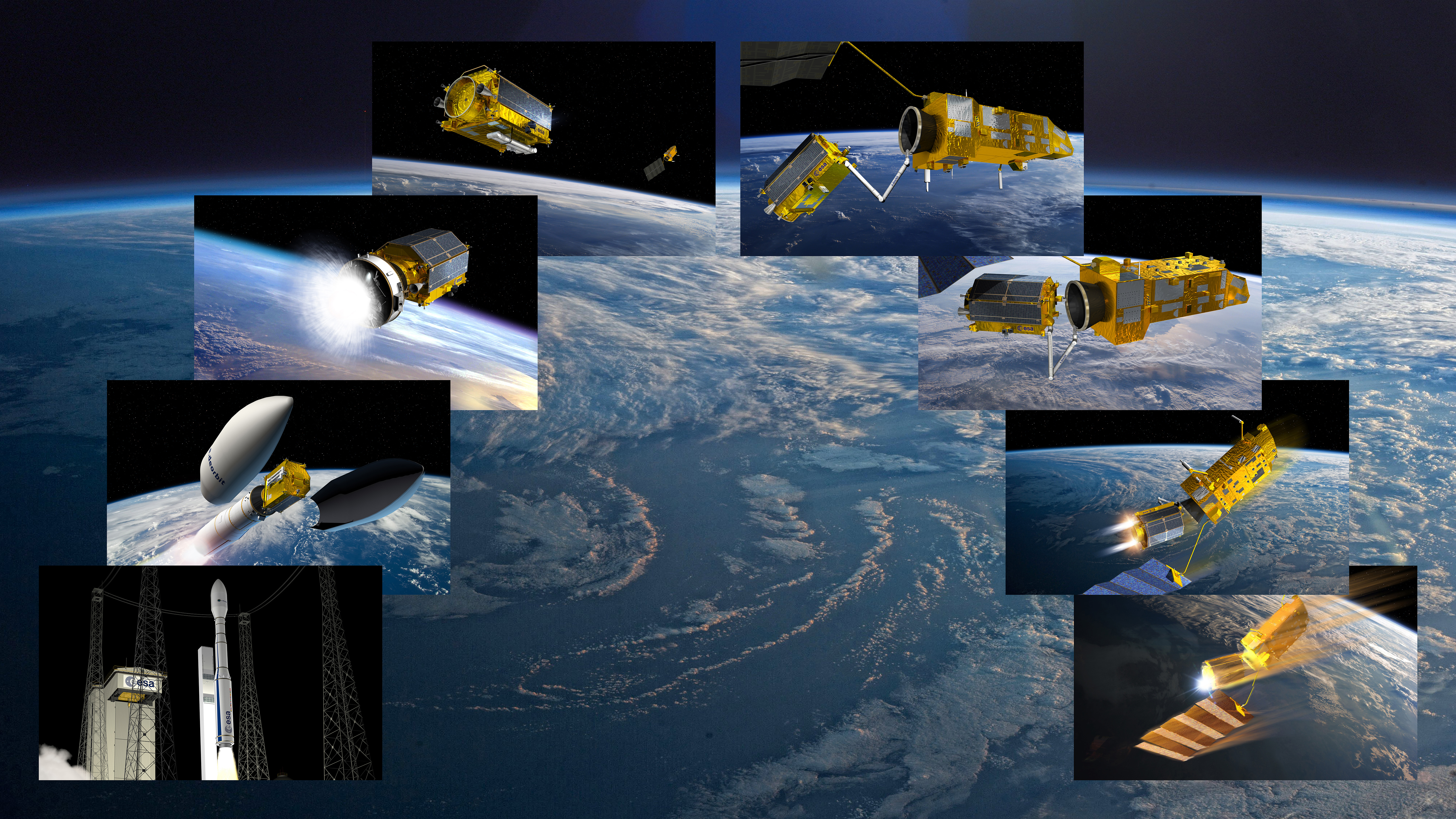Luisa Innocenti, head of ESA’s Clean Space initiative, has been living the e.Deorbit mission concept from its first steps to its evolution into a potential in-orbit servicing mission. On 22 November, years of studies related to the e.Deorbit mission concluded with a final presentation. For Luisa, this marks the transition from one worthy goal to the start of a new one.
In this post, Luisa explains what e.Deorbit has taught us.
Work on e.Deorbit began in 2013. Initially, ESA had asked three consortia to look into a service-oriented approach to remove Envisat, an ESA-owned satellite that performed a fantastic Earth-observation mission for 10 years but finally failed in 2012. The results were that industry judged such a mission would be too risky and too “new”. None of them were able to accept this challenge.

In 2013, ESA issued an Invitation to Tender to perform a ‘Phase A’ pre-development study for an Active Debris Removal mission, known as ‘e.Deorbit’
Following this initial analysis contract, ESA decided to go for a standard approach and next conducted two parallel ‘Phase A’ studies into the mission. The companies involved performed a system study looking at all aspects of the technology development required for this type of defunct satellite removal mission, including, notably:
– Capture mechanisms
– Guidance, navigation and control
The Phase A study contracts were then followed by two Phase B1 studies going deeper in all aspects, including operations. Incidentally these were the first ESA examples of Phase B1 studies using the Model Based System Engineering methodology.
On 22 November, the ‘consolidation phase’ of e.Deorbit came to its conclusion.

e.Deorbit was an ESA mission to remove a single large ESA-owned debris from orbit
The purpose of this most-recent activity has been to highlight the synergies between e.Deorbit and a broader mission concept, referred to as ‘in-orbit servicing’. This would involve the development of spacecraft and technologies that could refurbish, refuel or reboost satellites already in orbit.
So does this last activity represent the end of the original e.Deorbit concept? According to Luisa, in a way, yes.
“We had hoped that today we would already be in the implementation phase,” she says. “Sadly we did not manage this, maybe because this mission came too soon, but also at least in part due to the global economic situation.”
“The reaction from our member states was, ””Is there a market?” and “What are the recurring technologies?”
She adds: “We could not convince them that there is a market for debris removal — possibly also the selection of Envisat was considered too ambitious.”
However, this summer ESA issued a ‘request for information’ to industry with the mandate to take down one ESA-owned defunct satellite while demonstrating in-orbit servicing.
A total of 13 companies sent proposals, many of which were very high quality.
This result was inspired, no doubt, by the past five years of study work performed for e.Deorbit.
In the end, and with this critical industry support, ESA’s Clean Space team were able to demonstrate that the technologies needed to remove large derelict satellites can be developed, and that it would be feasible to fly such a mission. The main issue, of course, remains the budget. Now, the funding must be put on the table by the public and private sectors alike – which can happen since there is more and more attention world-wide to in-orbit servicing and the refurbishment as well as removal of future satellites.
“By running these activities and spreading knowledge within and beyond ESA, I think Clean Space has helped boost awareness – helped along by movies such as Gravity, which helped a lot to inform the public about this urgent problem,” says Luisa.
Today, ESA and Europe’s space actors have very good knowledge about the technical challenges involved in making such a mission a reality. Industrial knowledge and capabilities have been growing as well, and today industry knows what to do — plus industry are now clear on the synergies between active debris removal and in-orbit servicing.
“e.Deorbit has inspired a lot people, from engineers sitting at ESTEC to children in Hawaii (a class of 4thgrade students who contacted ESA to propose new technologies for debris reduction), and includes even artists in The Netherlands, ” says Luisa. “This was and remains a fantastic mission.”
But then, why do we stop it today?
“The reply is quite simple,” says Luisa. “The funding to continue the mission has not been provided. We have funding to develop relevant technologies, but not to actually remove a defunct satellite.”
“So, today, we have abandoned pushing for the specific e.Deorbit mission and we have asked industry to make proposals to remove a defunct ESA satellite while demonstrating in-orbit servicing,” concludes Luisa.
In the end, this makes good sense; using a de-orbiting mission as a demonstration flight for the future, wider business of in-orbit servicing offers ESA and industry a broader path to boosting and improving the competitive capacities of European industry.
“It’s a new path to a potentially very valuable business,” says Luisa.
Read other posts of the series ‘From ADR to IOS’:





Discussion: no comments